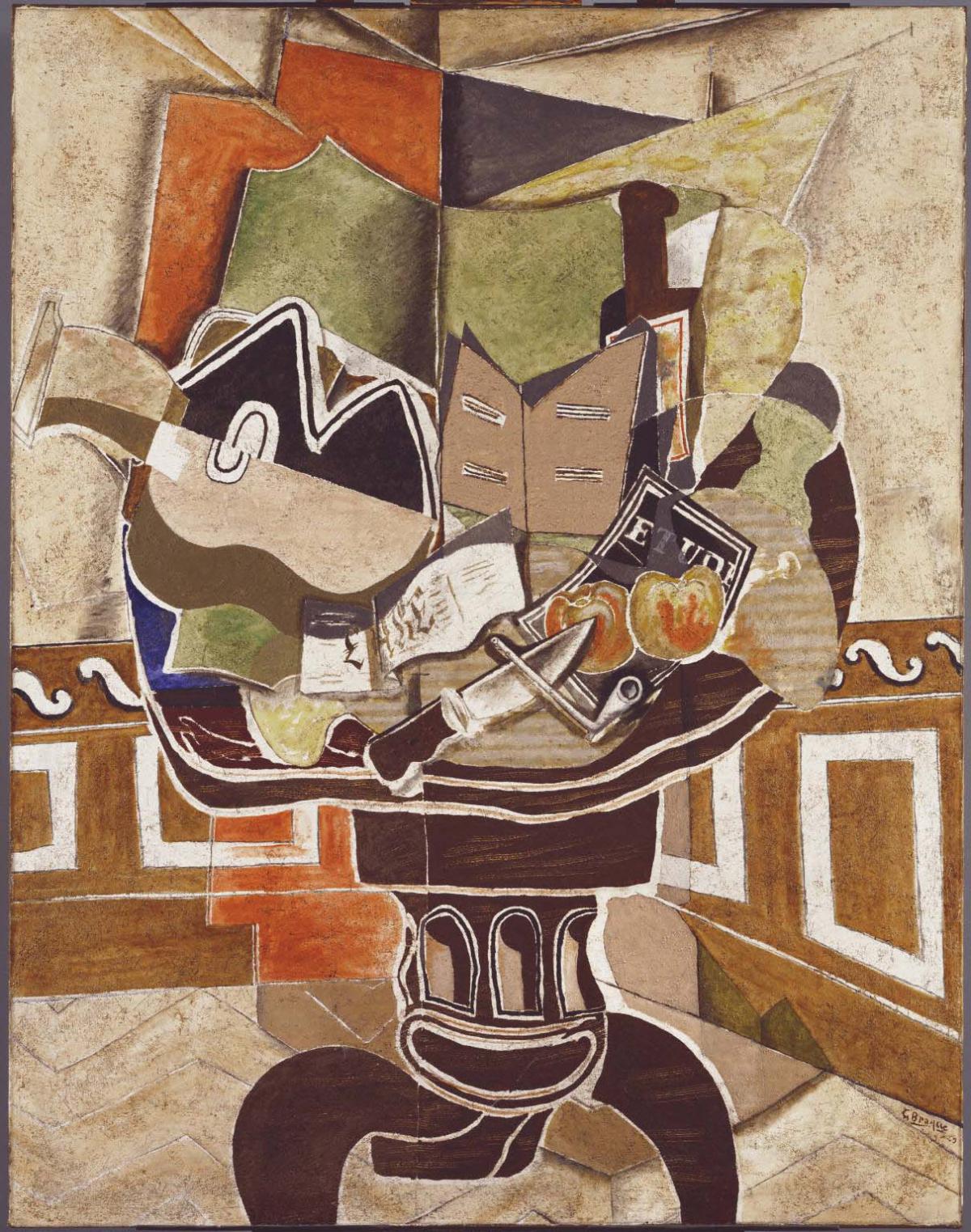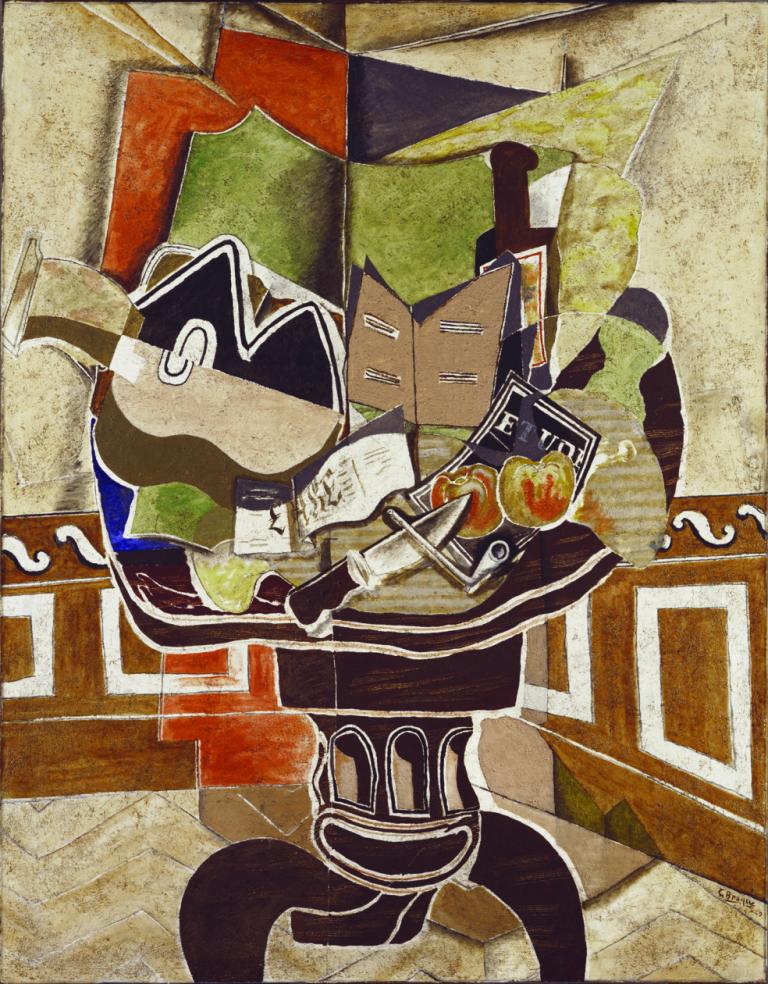The Round Table
Georges Braque ( 1929 )

CompositionallyThe Round Table is related to Braque’s large vertical still lifes from 1918 to 1919, when the common French pedestal table known as the guéridon first appeared in his paintings. With this work, Braque substantially expanded his color range, increased the scale of his canvases, experimented with textures and materials, and devised a more complex use of pictorial space. Pushing the table into the corner of the room, he creates an unusual perspective that presents multiple viewpoints at the same time. The result is a grand, luminous canvas in which oil has been mixed with sand over gesso to create a textured, fresco-like effect.
At the time of its purchase, The Round Table was the largest, most abstract painting in the museum’s collection. Phillips considered it to be “one of [Braque’s] greatest and most exciting works—a consummation of the artist’s best powers … all that was hoped for in the founding a school on Cézanne’s cubes and cones … . The rest is architecture … . It is functional and majestic in its forms and in its chromatic range it is exultant.” Soon after, Phillips began installing works by Braque in groups or units in the museum’s galleries.
